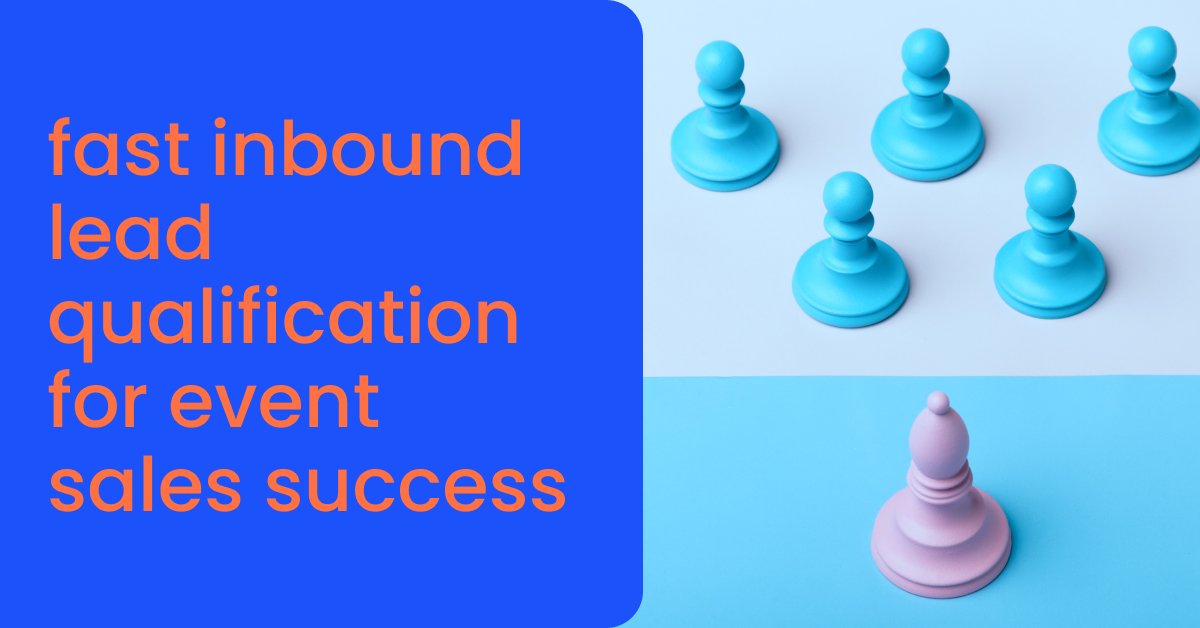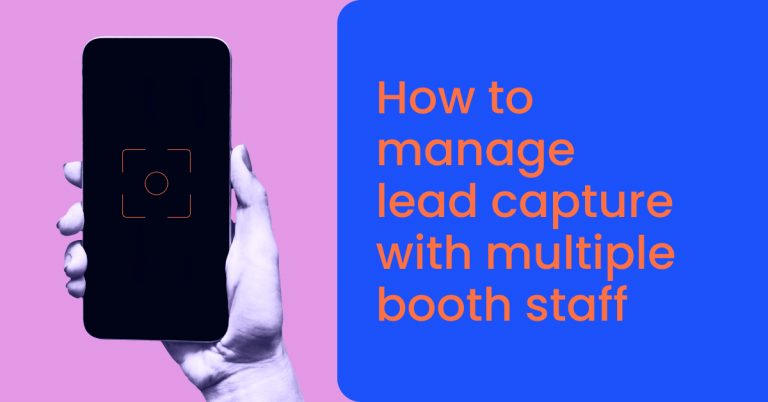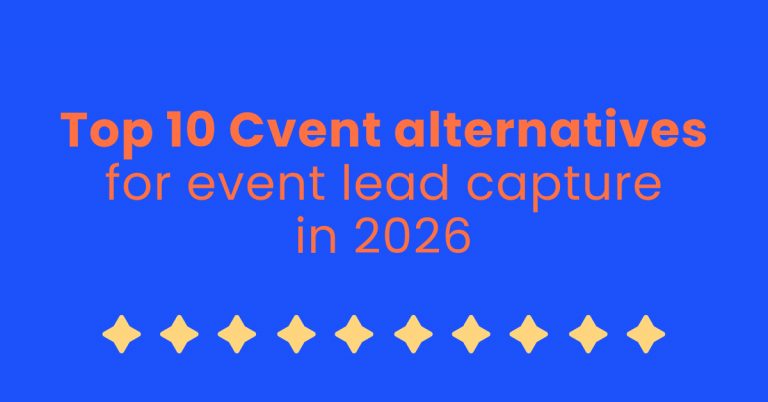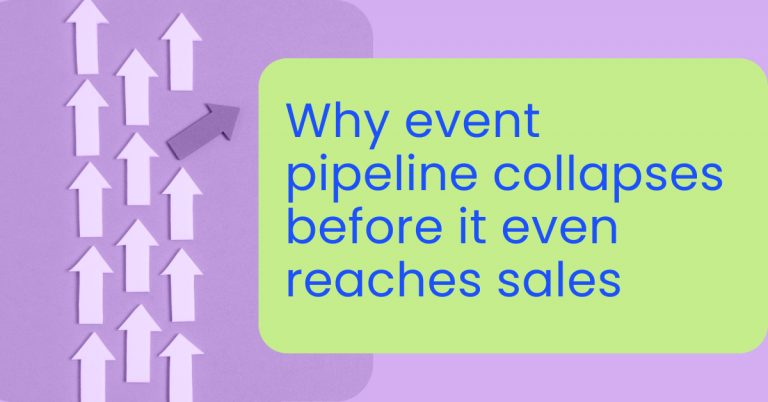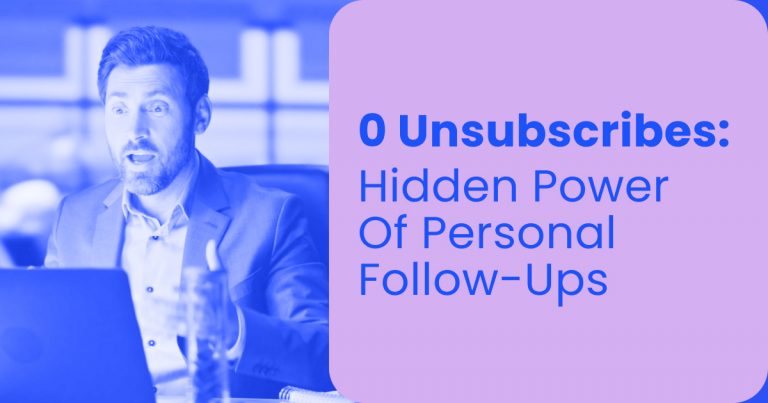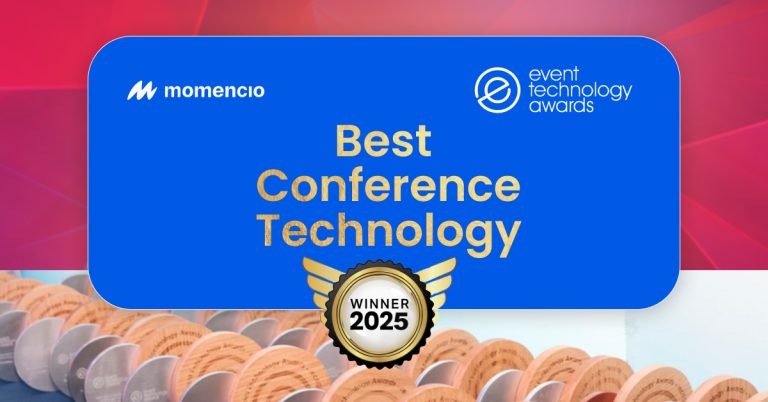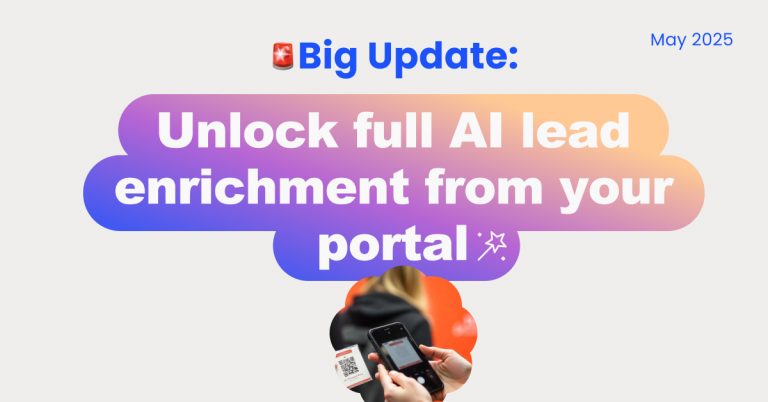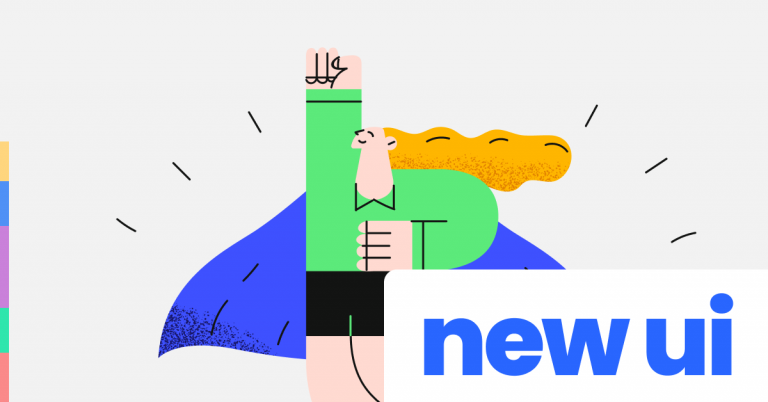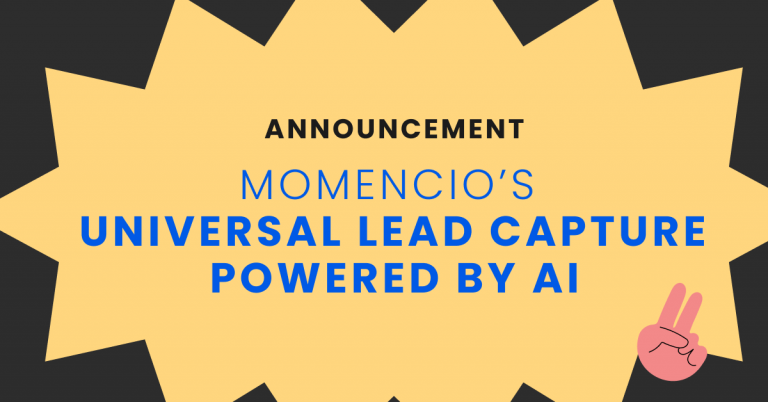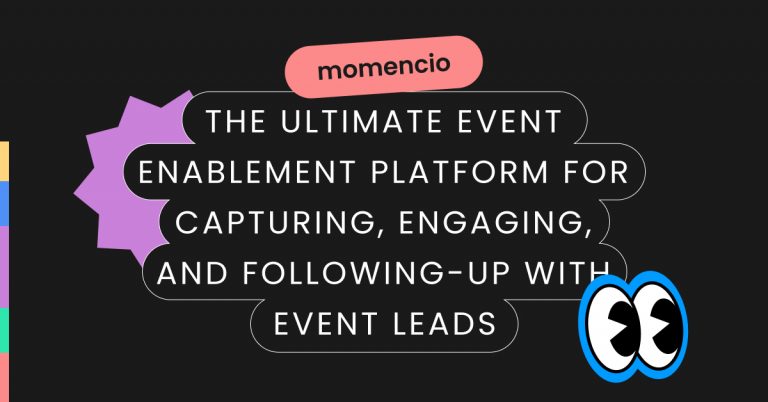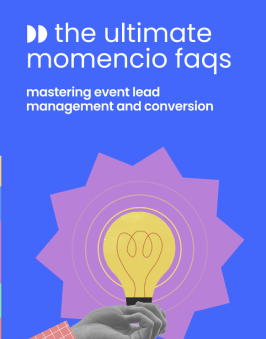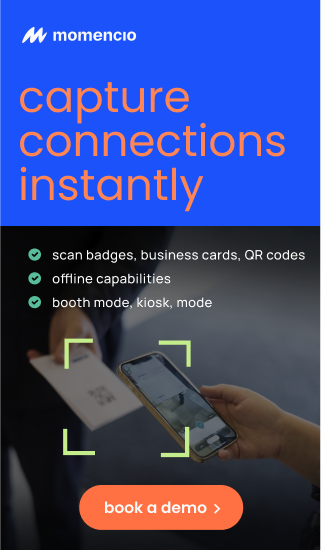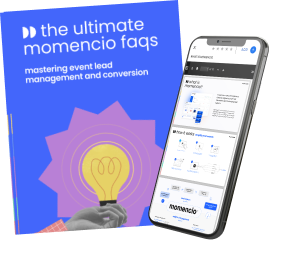Leads. You walk away from the event with hundreds of them. Badges scanned. Hands shaken. Interest piqued.
And then what?
Your inbox is full. Your CRM has new entries. Your sales team is waiting. But nothing feels ready. Most leads are half-baked. Some didn’t even remember visiting your booth. Others came for the swag.
This is the messy middle.
Between the high of capturing leads and the promise of closing deals lies a quiet chaos. This is where good intentions go to die. Because inbound lead qualification—done poorly—is where momentum stalls. And yet, we still pretend the problem is more leads or better data or smarter tools.
But the real problem?
It’s that we’ve been asking the wrong questions. Not “How many leads did we get?” but “Who is actually ready to buy?” Not “Did they engage with our content?” but “Did they lean in when we spoke?”
Lead qualification isn’t about technology. It’s about attention.
The attention you pay to what they did, what they want, and what they need from you next. Not eventually. Now.
63% of buyers who request information from a business never hear back. Not because we don’t care. But because we don’t know what to do with them.
So we send them all a newsletter and hope the right ones raise their hands.
This article is about doing the opposite. About slowing down, paying attention, and creating a system that’s not just fast—but useful. For your team. And for the people you just met.
The cost of not knowing who’s worth your time
After a three-day event, your team returns with 428 new leads. The booth is dismantled, the branded pens are gone, and someone on your team proudly announces the total count of badge scans like it’s a victory lap. And on paper, it is—more names, more potential, more chances to win new business. But here’s the thing no one says out loud: most of those leads won’t matter in two weeks. Many won’t answer a follow-up email. Some won’t even remember meeting you. And yet, we treat them all the same.
In the scramble to capitalize on the post-event buzz, we default to motion instead of strategy. Everyone gets added to a drip campaign. The sales team is handed a spreadsheet and told to “start dialing.” Outreach begins not with insight, but with hope. Hope that a few of those names will turn into pipeline, that someone will click the right link, or book a meeting, or magically say yes.
This is where momentum breaks. Because when every lead is treated as equal, the good ones get lost in the noise, and the ones that actually had potential begin to cool.
Fast inbound lead qualification is not about blasting follow-ups or assigning a score based on a job title. It’s about knowing, quickly and confidently, who is ready for a deeper conversation—and who never was. It’s about understanding how someone looked you in the eye at the booth, how they leaned in when your AE spoke, what question they asked after your demo, and whether they scanned their badge out of real curiosity or just for the free coffee voucher.
These are not signals you can pick up from CRM fields alone. They live in the heads of your event staff, the people on the ground who actually had the conversations. But too often, their intuition never makes it into the system. So we’re left trying to interpret lead quality from incomplete forms, generic engagement scores, and AI tools that confuse attendance with intent.
The companies that win in this moment are the ones that do something different. They take time—sometimes just minutes—to capture the context behind the contact. They ask their team to tag leads not just by title or industry, but by energy, curiosity, and potential fit. They design their follow-up strategy around the idea that not all leads are created equal, and that speed without clarity is just noise.
Inbound lead qualification, done right, isn’t about automating your way to efficiency. It’s about building a system that honors human judgment, prioritizes the right conversations, and gives your sales team the confidence to move fast—on the leads that actually matter.
What fast really means (and what it doesn’t)
There’s this common belief—especially in event-heavy sales orgs—that “speed wins.” Follow up fast. Call quickly. Don’t let the lead go cold.
But here’s what rarely gets said: speed without direction isn’t speed. It’s noise. It’s reaction instead of response. And when your team is reacting, they’re not selling. They’re scrambling.
So let’s redefine what “fast” actually looks like when it comes to inbound lead qualification.
Fast starts before the event
No one talks about this enough. Fast lead qualification doesn’t start when the badge gets scanned. It starts before you even set up your booth. It’s in the planning. It’s in deciding what a qualified lead actually looks like—and making sure your team knows how to spot one.
Is it someone with buying authority? Someone struggling with a problem your product solves? Someone who asks the hard questions during the demo?
Fast qualification becomes possible when you’ve aligned your sales and marketing teams on this before the event. Not after.
Capture isn’t the same as qualify
A scan is easy. A conversation is harder.
Just because someone gave you their badge doesn’t mean they’re a lead. The best field marketers know this instinctively. They know the real value lies in the few seconds of face-to-face interaction—how someone responded, the questions they asked, the way they lingered at the demo screen.
This kind of intel lives in the moment. Not in a form. Not in an Excel sheet.
That’s why teams that perform best are the ones who have a way to capture not just the contact, but the context. Tools like momencio allow teams to record notes while the conversation is still fresh—so sales doesn’t have to decode a pile of data without knowing who said what or why it mattered.
No pitch. No push. Just simple, structured context at the point of interaction.
The cost of waiting too long
We’ve all felt it. That lag between the end of the event and the start of the follow-up sequence. Sometimes it’s a day. Sometimes a week. But every hour that passes is a missed signal, a missed moment.
Because the truth is, buyers don’t wait around.
If your competitor follows up with a relevant, helpful message while your email is still in draft mode, you’ve lost that edge. Not because their product is better—but because they showed up first and with something that felt specific.
When qualification is baked into the capture process, your follow-up can begin while the event is still happening. It doesn’t need to wait for a debrief meeting or a spreadsheet merge. And when that happens, your best leads feel seen. And they remember.
Score with your gut, refine with data
You don’t need a machine learning algorithm to tell you who looked you in the eye and asked thoughtful questions.
You need a system that captures those moments—and gives your data team something to build on.
Start with human insight. Use gut instinct. Let your booth staff mark leads in real time: hot, warm, cold. Then layer in behavior data, email engagement, CRM tags. This is where tech earns its keep—not by replacing the human layer, but by supporting it.
If you build that kind of system, speed becomes a natural byproduct. Not a forced race.
The handoff that breaks the system
It’s a Monday morning ritual.
Marketing walks into the sales stand-up with a sense of triumph. “We got over 600 leads from the event,” someone says. There’s nodding. A few polite claps. The SDR team glances at the sheet, then at each other, and then someone quietly mutters: “Okay, but which ones are real?”
That’s the moment the breakdown begins.
When more leads means more guessing
Here’s the truth most teams won’t admit: more leads usually means more work—not more revenue. Because when qualification hasn’t been done well, all you’ve really delivered is uncertainty. And salespeople are trained to chase signals. When they can’t see a signal, they don’t chase.
So, what happens?
They pick the obvious ones. The ones with the fancy titles. The ones from the logos they recognize. Everyone else gets pushed into the CRM abyss. Maybe a nurture track. Maybe a future call. But most likely, forgotten.
And the follow-up strategy becomes a guessing game.
Everyone wants the same thing—but they speak different languages
Marketing talks in numbers: how many scanned, how many opened emails, how many visited the booth.
Sales talks in outcomes: who will take a meeting, who’s ready to buy, who has budget and urgency.
What’s missing is a shared language. A way to tag leads in real time—not just with names and emails, but with buying signals, objections raised, questions asked. Not just who showed up, but who cared.
This is where teams that use tools like momencio quietly pull ahead. Because when the person at the booth can log a lead, record the interaction, drop a note about the prospect’s pain point, and rank their urgency—all from the same screen—that’s not just data. That’s momentum.
And the handoff? It’s not a cold pass. It’s a warm intro.
If sales can’t trust the list, they won’t use it
It doesn’t matter how great your campaign was. Or how beautiful your booth looked. If sales doesn’t trust the leads, they’ll go back to their own pipeline.
Trust is built when the first call lands well. When the notes match the reality. When the lead says, “Yes, I remember that conversation,” and not, “Wait, who are you again?”
Qualification builds that trust. Not in a week. Not after the post-event meeting. But in the minutes right after the interaction happened.
That’s what makes a lead feel real.
So the question isn’t “How do we generate more leads from our events?” It’s “How do we make sure the best ones don’t get lost in the noise?”
That’s a question worth building a system around.
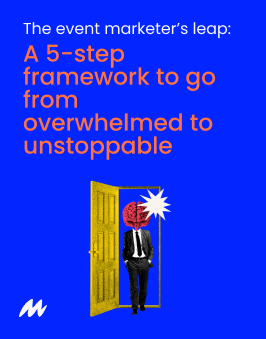
The moment after matters most
The event’s over. The booth is packed. The team’s back on flights, or catching up on Slack, or sleeping off three days of smiling and standing.
But the people you met? They’re still warm. Still curious. Still open to the conversation that started in a crowded exhibit hall or during that casual chat by the coffee station.
This is the window.
It doesn’t last long. Maybe 48 hours. Maybe less.
Don’t let your follow-up feel like a form letter
Too many teams default to the easy way out.
They send a generic follow-up to every scanned badge. The kind that starts with, “Thanks for visiting our booth at [Event Name]!” and ends with a vague invitation to “let us know if you’d like to learn more.”
That kind of message doesn’t remind anyone of the conversation you had. It doesn’t reflect their curiosity or their questions. And worst of all—it makes you forgettable.
Fast doesn’t mean generic. It means now, with context. It means sending the email that sounds like you were listening. Because you were.
Real follow-up starts with remembering
There’s a reason most follow-ups fall flat: we forget.
We forget what was said. We forget the vibe. We forget which product they leaned toward, which competitor they mentioned, or what problem they said was keeping them up at night.
And even if someone on your team remembers, that insight rarely makes it back to the people writing the emails or making the calls.
Unless you have a habit—or a system—for capturing it.
When the right tools are in place, the booth staff doesn’t just log a name. They log intent. Pain points. Keywords. That moment when the lead said, “Actually, this is exactly what we’ve been struggling with.”
It’s not flashy. It’s just structured memory.
And when that memory feeds the follow-up, the lead feels seen. That’s the difference between being ignored and getting a reply.
Automation can’t replace attention—but it can help scale it
No one wants to write 72 custom emails after a trade show.
But what if you only had to write three?
One for the hot leads who asked for a demo. One for the warm leads who had questions. One for the casual visitors who might become something more—eventually.
With the right inputs—those small, thoughtful notes captured at the booth—your system can route the leads to the right message. Still personal. Still timely. Just not overwhelming.
This is what great post-event follow-up looks like. Not a blast. Not a campaign. A response.
Fast, because it’s ready. Effective, because it’s relevant.
And the best part? When it works, the reply doesn’t feel like a win. It feels like the natural next step.
Same event, different planet
Marketing walks away from the event thinking: We crushed it. We had the best booth on the floor, ran out of swag by Day 2, collected more leads than last year. High fives all around.
Sales walks away thinking: I had a few solid conversations. But let’s be honest—most of those badge scans? They’re not going anywhere.
And here’s the thing: both of them are right. They’re just not speaking the same language.
To fix the way we qualify inbound leads, we have to fix this split first.
So let’s look at how these teams usually approach things—and what it could look like if they stopped operating in silos.
Marketing reality |
Sales reality |
Shared reality (the fix) |
| Lead count is the goal. More scans = better ROI. | Only a small fraction of those scans will convert. | Success isn’t volume—it’s clarity. How many leads are truly sales-ready? |
| Campaigns are built weeks before the event. Messaging is polished and approved. | Conversations shift depending on who walks up. Messaging flexes. | Alignment happens before the event. Shared personas, real objections, and flexible language. |
| Follows up with “nurture streams.” | Digs through lists looking for warm leads. | Let the booth staff tag leads by interest level. Route accordingly. |
| Assumes intent from engagement (e.g., booth visit = interest). | Has to guess if that visit meant anything. | Capture context at the moment. Who asked real questions? Who just grabbed a brochure? |
| Thinks success is measured by MQLs generated. | Thinks success is measured by deals closed. | Success is measured by hand-raisers who convert. Shared attribution is key. |
Notice a pattern?
Marketing tends to scale. Sales tends to filter. Neither is wrong—but without shared inputs, you get misalignment, resentment, and wasted effort.
When you capture the right information in real time—notes, tags, objections, even the tone of the conversation—you give both teams what they need.
Marketing gets better targeting data. Sales gets leads that feel human, not harvested. And leadership gets something everyone wants: a clean path from event to revenue.
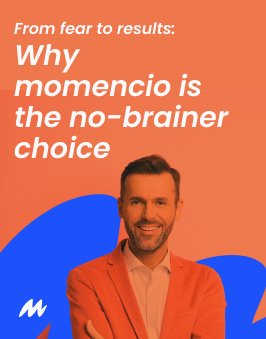
If you can’t measure it, you can’t improve it—but what are you measuring, really?
At the end of every quarter, someone pulls up the numbers. Lead volume. Conversion rate. Time-to-follow-up. A few colorful charts. A few awkward silences.
And someone asks: “Why didn’t more leads close?”
The usual answers follow—wrong targets, weak follow-up, delayed outreach, bad timing. Everyone nods. And then, on we go.
But if you want to actually improve your lead qualification process, you have to get clear on what matters. You have to stop measuring activity and start measuring clarity.
So let’s start with the basics.
Are you tracking speed or usefulness?
Most CRMs will tell you how fast a lead was contacted. But that’s only half the story. The real question is: was the first touch relevant?
Speed without relevance is just another interruption. A lead doesn’t care if your SDR reached out within three hours if the message feels like a script pulled from a campaign.
What if you tracked how often the first email got a response? Or how often it referenced a real conversation that happened at the booth?
That’s not just performance. That’s resonance.
Did your team know who mattered?
Lead scoring can be powerful—but only if it reflects what actually happens on the ground.
If your “hot leads” don’t convert, maybe it’s not the leads that are cold. Maybe your scoring model is built on assumptions instead of observations.
Start small. Look at which leads came in with notes. Which ones had context. Which ones asked specific questions. Then track those against actual outcomes.
The goal isn’t to build a perfect algorithm. It’s to build a smarter gut.
Can you see the gaps?
Here’s something most teams never measure: how many leads disappeared between the booth and the CRM.
It happens. Notes get lost. Scans don’t upload. A rep forgets to tag a lead. And just like that, a real opportunity disappears into the void.
But when you use a system that connects capture with follow-up—one that ties the face-to-face moment to the digital journey—those gaps close. You stop losing the leads that mattered most.
And when you review the data, you’re not just looking at numbers. You’re looking at a story that makes sense.
Don’t optimize everything—optimize what matters
Yes, you can track open rates. Click-through rates. Time on page. But none of it matters if your sales team still ends up ignoring the lead list.
Sometimes, the most important metric is how many reps actually said: “That was helpful.”
Because when qualification is working, it makes everyone’s job easier. Sales moves faster. Marketing looks smarter. And your events stop being brand exercises and start becoming revenue drivers.
That’s the win. Not more metrics. Just the right ones.
Conclusion
You don’t need another tool. You need a better habit.
Fast inbound lead qualification isn’t about speed. It’s about signal. It’s about listening harder, remembering more, and building systems that don’t forget what happened five minutes after the handshake.
This isn’t something you bolt onto your process after the event. It is the process. And the teams who understand that—the ones who obsess not over volume but over clarity—are the ones who close faster, build better relationships, and make the most of every event they show up to.
Not because they worked harder. But because they paid better attention.
And then did something about it.
If you’re ready to stop treating leads like names on a list and start treating them like the beginning of real conversations, explore how momencio helps teams qualify leads as they’re captured—not after the fact.
Book a demo and see how the right system turns attention into action.
FAQs
- How soon should sales follow up with inbound leads from an event?
- Ideally within 24–48 hours while the conversation is still fresh. But speed isn’t enough—follow-up needs to reference the interaction to be effective.
- What’s the biggest mistake teams make with post-event lead qualification?
- Treating all leads the same. Without context—like interest level, questions asked, or buying signals—your team ends up guessing instead of prioritizing.
- Can automated lead scoring replace human intuition?
- Not entirely. Scoring systems are helpful, but the best qualification happens when real-time observations from your field team are captured and combined with behavioral data.
- What’s the best way to align sales and marketing on lead qualification?
- Start before the event. Define what a “good lead” looks like together, and create a shared system for tagging and capturing lead quality at the point of interaction.
- What should we measure to improve our lead qualification process?
- Focus on clarity metrics: how many leads came with notes, how many were contacted with relevant follow-ups, and how many resulted in meaningful next steps.
Interesting facts from research
- Inbound tactics generate 54% more leads than traditional outbound practices.
- Leads followed up within 24 hours of a trade show are 60% more likely to convert.
- 14% of exhibitors reported a 5:1 ROI from their trade show exhibitions.
- Companies using inbound marketing strategies save $14 on every new lead acquired.
